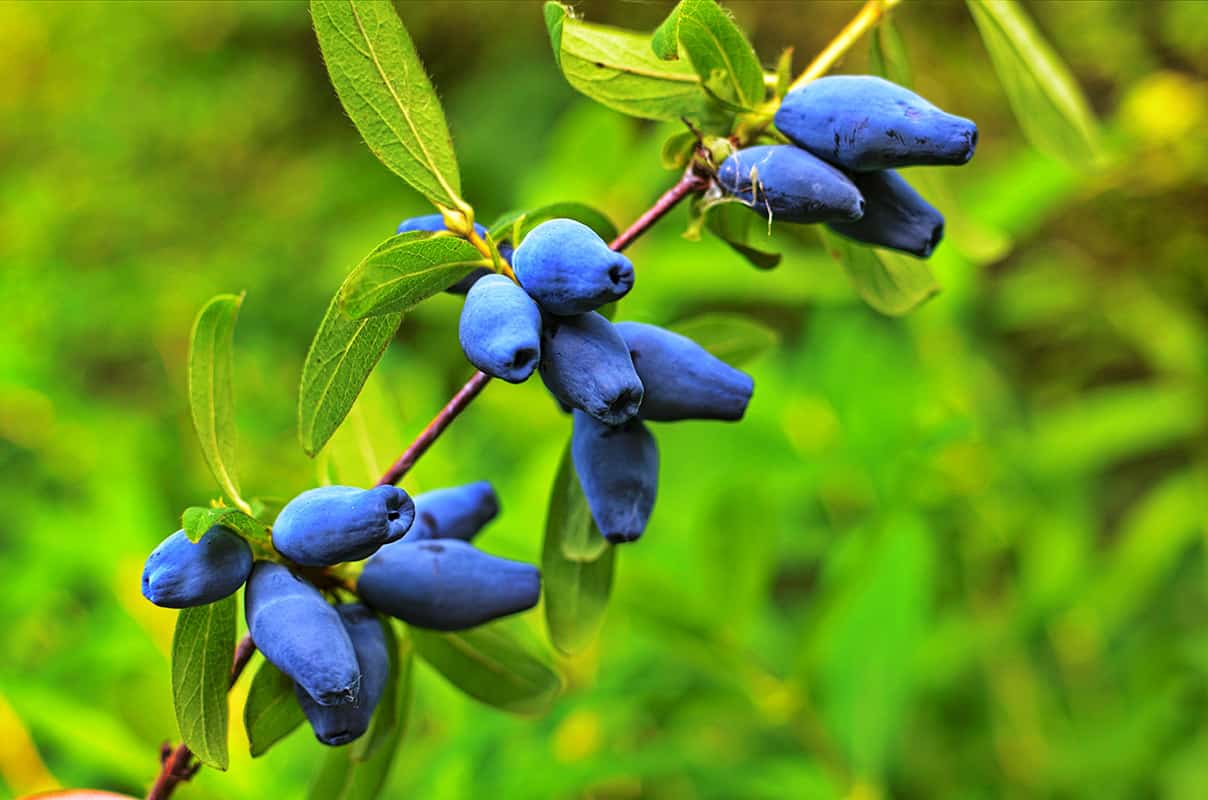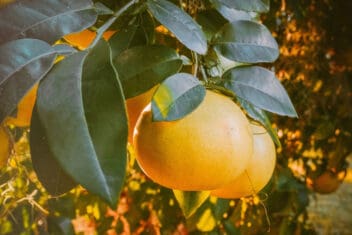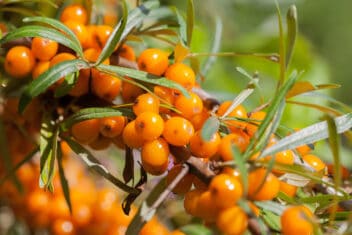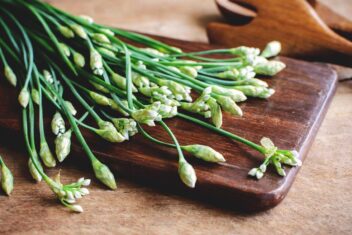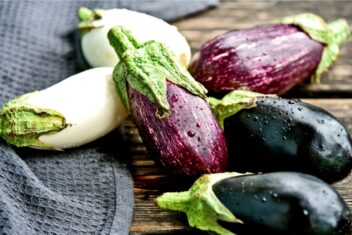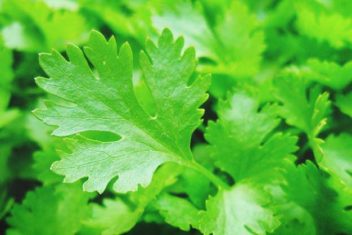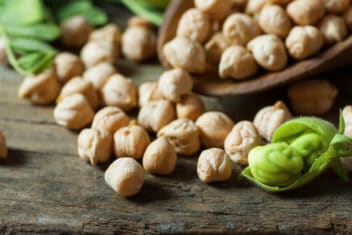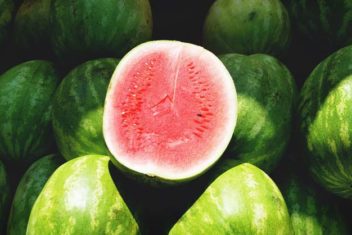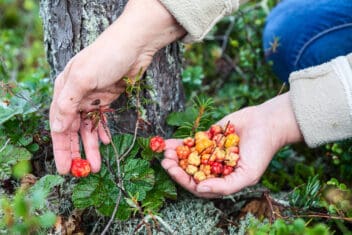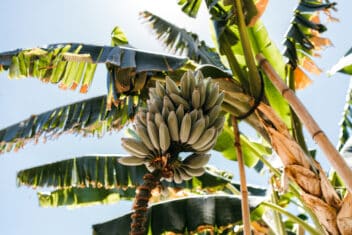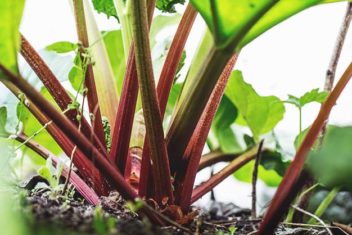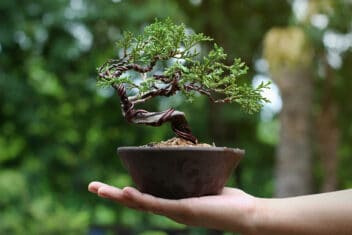If you haven’t met or tried growing the spectacular honeyberry before, prepare to be amazed.
These luscious fruits are shaped like elongated Concord grapes, are the same color as blueberries, and taste like heaven. Best of all, they’re surprisingly easy to grow!
Read on to learn more about them, and how to cultivate them in your own space.
All About the Honeyberry
The first time I tried a honeyberry was a bit of a shocking surprise. I was volunteering in a community garden in Toronto, and a friend I was working with said “try this!” before shoving something into my mouth.
Its flavor was… well, difficult to describe. Sort of like if a blueberry was combined with raspberry, honey, pineapple, and a flower of some kind. There’s no way to adequately describe the taste other than “wow, what is that? I need more of that in my life”.
Honeyberry (Lonicera caerulea) is a member of the honeysuckle family and is also referred to as kamchatka or haskap.
It’s a deciduous shrub, and although you may be unfamiliar with it, it’s native to cool, temperate climates throughout the northern hemisphere. It’s found wild in Canada, Russia, Poland, and Japan. In fact, haskap is the indigenous Ainu name for this gorgeous plant.
Different Varieties to Try
Just like most other fruits, different varieties are suited to different purposes. That’s not to say that they aren’t interchangeable: of course, you can eat jam berries by the handful as soon as they’re ripe, or make wine out of… well, just about anything.
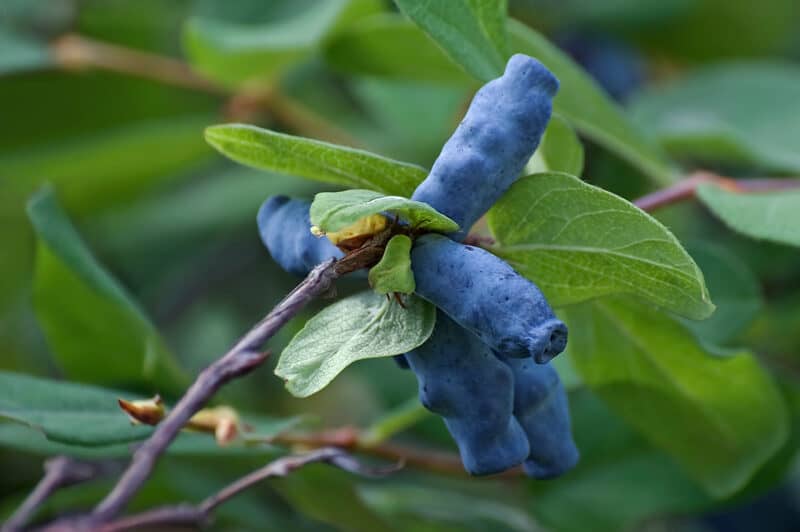
That said, here are some of the varieties that you may like to explore, depending on how you’d like to use them.
Berries to Eat Raw
- Jugana is an incredibly sweet Russian variety, with berries that are such a deep blue, they’re almost black.
- Indigo Gem is a mid-season variety. This one isn’t as productive and has smaller berries than some other varieties, but what it lacks in bounty it makes up for in flavor.
- Aurora will offer you a mid-season harvest, and is lovely both as a producer and a pollinating variety. Plant one Aurora to help pollinate up to eight Borealis, Tundra, or Indigo plants.
- Boreal Blizzard is a late variety with big, juicy fruits. It’s hardy right down to zone 2, so it’s ideal for northern US states, most of Canada, Alaska, and northern Europe.
- Strawberry Sensation may be a late harvest berry, but the fruits are worth the wait. They’re luscious and sweet, ideal for eating fresh or freezing.
Best for Jam Making
- Berry Blue bears early, with tart/sweet, gorgeous fruit that’s ideal for jams, jellies, and pies. It also acts as a great pollenizer for Indigo varieties.
- Kawai also bears early, and you’ll want to capture its gorgeous sweet/tart flavor in all manner of preserves. Crack open a jar in the dead of winter and be transported back to summer sunshine.
Ideal Varieties for Wine
- Blue Banana: a mid-season variety that boasts sweet-tart berries, ideal for winemaking. You can also freeze them for wintertime smoothies.
- Tana will produce very late in the season, and its berries err on the tart side, rather than sweet. Wine made from these is absolutely luscious.
Planting and Propagation
Your best bet is to buy honeyberry plants from a local garden center or nursery. Sure, you could plant your bushes from seed, but it’ll take them a long time to grow. Additionally, plants grown from seed will take at least three years to bear any fruit.
Alternatively, if you know someone who’s growing honeyberry plants already, ask if you can take some cuttings.
Use a clean knife or pruning shears to take a cutting that’s at least six inches long. Place this cutting in water and keep it in a sunny spot.
Change the water regularly to keep it from getting manky, and you should see roots develop within a month or so. Let these roots grow a bit longer before transplanting into a sterilized potting mix.
Keep this potting soil moist, and allow your plant to grow for a couple of months to establish its root system.
Then, gradually harden it off by keeping it outside during the day. Once the stem seems strong and healthy enough, transplant it into a large outdoor pot, or right into a garden bed.
Sun and Soil
You’ll be happy to know that a honeyberry plant will grow remarkably well in just about any conditions. It prefers well-drained, compost-rich soil, but can do well in heavy clay as well, provided it gets enough sunshine.
It’s not surprising that since this is a member of the honeysuckle family, it thrives best with a lot of sunshine. That said, it is a northern hemisphere plant, and can burn or wither in the southern sun. If you’re growing this in a hotter climate, it will likely do best in partial shade.
You’ll need to plant two different varieties for cross-pollination. In fact, many nurseries have a specific pollenizer variety for their haskaps.
Ultimately, the key is to plant varieties that will bloom around the same time, otherwise they won’t transfer pollen.
When planting, remember that these beauties can grow over six feet in all directions. As such, give them plenty of room to spread out. Otherwise, they can get overcrowded: they’ll shade each other out, you’ll lose a bunch of berries, and the lower leaves may rot from lack of direct sun.
Caring for Honeyberries
Keep the soil moist, but not waterlogged. These plants thrive on their own in the wild, so don’t worry about fussing over them too much.
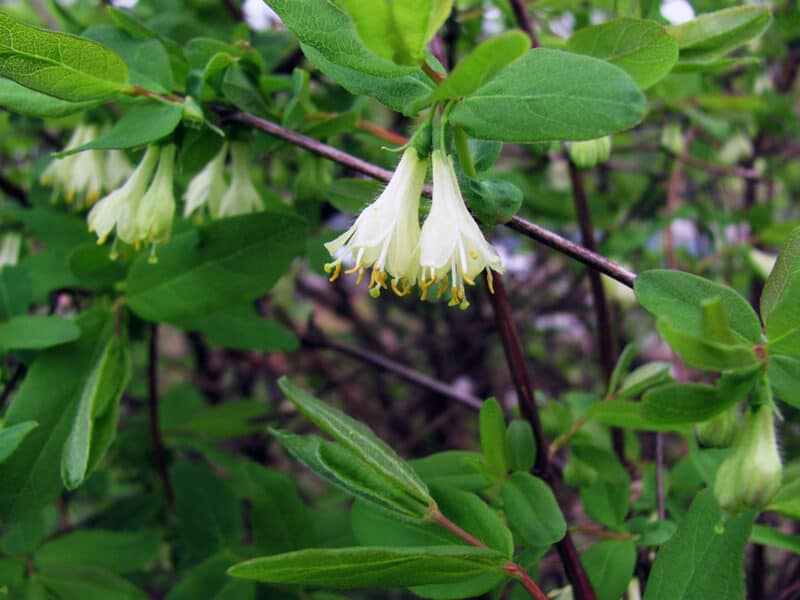
If you live in a dry, warm climate, however, give them a bit of mulch to help retain water. You can also add some vermiculite and/or peat moss into the soil for that purpose.
Honeyberry plants don’t really need to be fertilized, but you can work some aged compost into the soil before you plant them if you’d like to ensure a good foundation.
If you’ve planted in fairly depleted soil, then you might need to give them some extra nourishment. Regular doses of compost tea should keep them healthy and happy. Alternatively, work some organic, slow-release fertilizer into the soil so it can feed them over time.
The best time to add fertilizer is in spring before they produce blooms. This way, they have a head start in terms of fruit production. Plenty of nourishment will result in a more abundant harvest.
Pruning
As mentioned, these are really low-maintenance plants. Remove dead leaves as they appear, and keep the soil free from any rotted fruit to avoid attracting pests.
Don’t prune your honeyberry plants during their first five or six years. Instead, let them spread out and mature a fair bit, and just allow them to do their thing. Once fully mature, go ahead and prune older branches that don’t produce anymore. This will allow new branches to grow.
Aim for a combination of mature and young branches around your honeyberry bushes. The older, thicker ones will offer support, while the younger ones will be more productive.
Note: only prune these plants in late autumn or early winter. They produce so early in springtime that pruning them after January can shock them badly. If this happens, they won’t produce any fruit, and can even die back.
When in doubt, don’t cut.
Problems and Solutions to Growing Honeberry
Honeyberry plants aren’t prone to any kind of disease but can suffer from powdery mildew in wetter climates. The greatest issue you’ll have to deal with is predation. Birds, squirrels, mice, and deer all love these plants, and can take out half your crop.
Cover them with black netting to keep the birds off, and try to plant them in an area that deer can’t get to easily. Rodents are a bit more difficult to fend off, but they do help to clear any fallen fruit away from the roots.
Harvesting and Storing
You’ll know that your honeyberries are ripe when they pull easily off the stems. They don’t store well in the fridge for very long, so be sure to freeze or can whatever you don’t eat immediately.
The best way to freeze these berries is to spread them out on a baking sheet that’s been lined with waxed or parchment paper. Put that into the freezer overnight, and then transfer the frozen berries into individual bags.
This will keep them from smooshing together into a lump. Frozen haskap berries will stay good for about six months, or longer if they’re in a deep chest freezer.
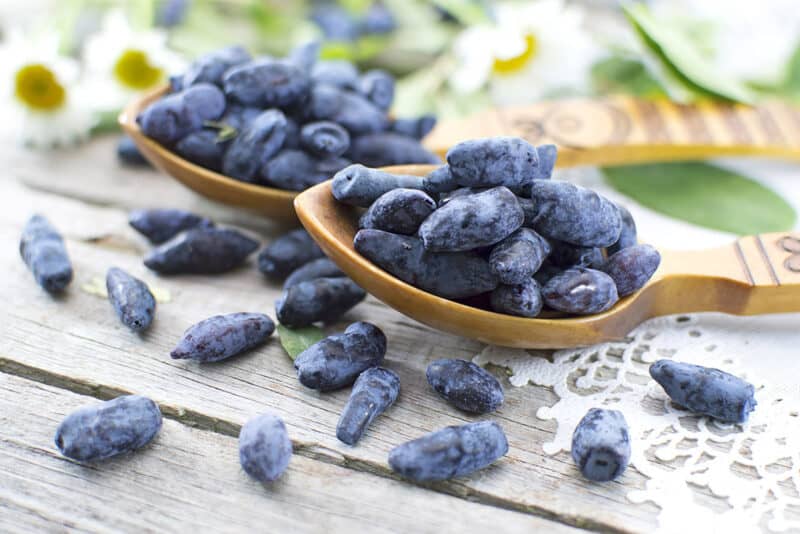
Honeyberry jam and jelly should stay shelf-stable for up to a year, provided you’ve followed safe canning procedures.
Whether you’re eating these beauties fresh, or setting them aside to enjoy during the winter months, they’re an absolute pleasure. If your friends and family members like them too, share the bounty!
Just root some new cuttings for them and encourage them to plant their own.
Sharing is caring, and the gift of self-sufficient (and delicious!) food production will keep bringing them joy for years to come.
